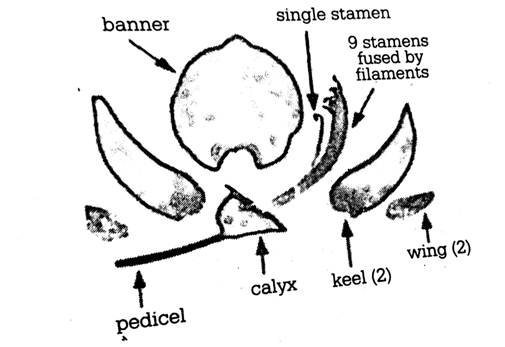 Multiple Choice Questions
Multiple Choice QuestionsHow many plants in the list given below have composite fruits that develop from an inflorescence?
Walnut, poppy, radish, fig, pineapple, apple, tomato, mulberry
Four
Five
Two
Two
Vexillary aestivation is characteristic of the family
Fabaceae
Asteraceae
Solanaceae
Solanaceae
Which one of the following organisms is correctly matched with its three characteristics?
Pea: C3 pathway, Endospermic seed, Vexillary aestivation
Tomato: Twisted aestivation, Axile placentation, Berry
Onion: Bulb, Imbricate aestivation, Axile placentation
Onion: Bulb, Imbricate aestivation, Axile placentation
How many plants in the list given below have marginal placentation?
Mustard, Gram, Tulip, Asparagus, Arhar, Sun hemp, Chilli, Colchicine, Onion, Moong, Pea, Tobacco, Lupin
Four
Five
Six
Six
Plants with ovaries having only one or a few ovules, are generally pollinated by
Bees
Butterflies
Birds
Birds
Which one of the following shows isogamy with non-flagellated gametes?
Sargassum
Ectocarpus
Ulothrix
Ulothrix
When the margins of sepals or petals overlap one another without any particular direction, the condition is termed as
vexillary
imbricate
twisted
twisted
Keel is the characteristic feature of flower of
Tulip
Indigofera
Aloe
Aloe
B.
Indigofera
Keel is petal is vexillary aestivation, which is a characteristic of family - Fabaceae, i.e. Indigofera tomato belongs to family - Solanaceae, tulip and while aloe to Liliaceae.
Papilionaceae (e.g. Indigofera, pea) is sub-family of Fabaceae, which has bilateral symmetry with corolla consist of 5 petals. It follows vexillary aestivation. A single upper posterior petal is known as banner. Two lateral compressed petals called wings and a pair of anterior small fused petal forms keel. Keel has concave sides which make them fused at bases. 
Hence, keel is the characteristic feature of flower of family - Papilionaceae. e.g. Indigofera.
